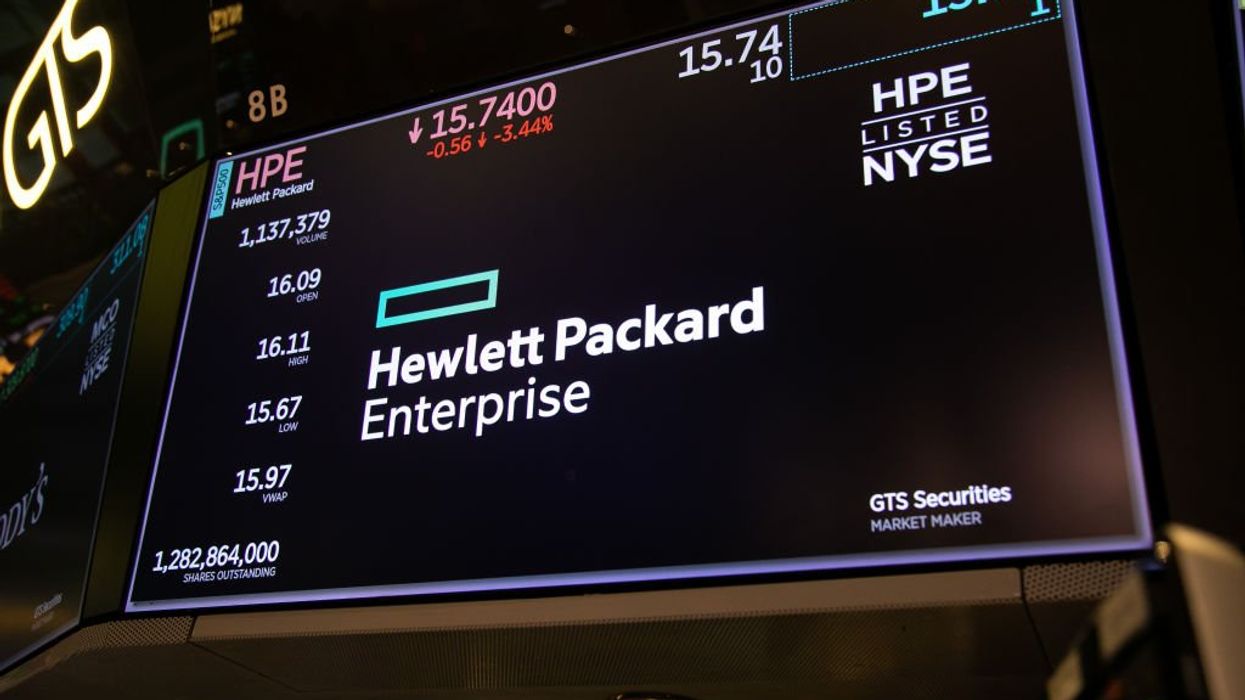
© 2025 Blaze Media LLC. All rights reserved.
Recently, a series of roadside bombs killed 11 people and injured dozens more in the Iraqi capital of Baghdad. The bombings, which were part of a larger, coordinated jihadi assault, killed a total of 32 people.
In light of these recent terrorist attacks, the violent overtures Iran has made towards Israel, U.S. president Barack Obama announcing the U.S.' withdrawal from Iraq, and Mercer's newly-released 2011 Quality of Living Report (which ranks cities according to the level of personal safety), writers at 24/7 Wall St. set out to catalog the most dangerous cities in the world.
"All of the areas on the list suffer from great political instability that has led to politically motivated violence," writes Michael B. Sauter of 24/7. "This climate of instability also has created an ideal breeding ground for crime motivated by profit. Whether the violence is criminal or political in nature, it perpetuates socioeconomic conditions that keep those nations’ economies depressed."
Indeed, almost all the cities that made the Mercer list are in countries that have experienced a violent coup or national war recently. In Tbilisi, for instance, a "brief but severe military conflict with Russia in 2008 led to long-term economic problems and the increased availability of firearms."
For all the cities on the list, the U.S. Department of State has instructed Americans to avoid the country altogether and in many cases "suggested citizens who remain there leave."
To illustrate the violent conditions in each city, and the danger it poses to Americans abroad, writers at 24/7 reviewed travel warnings issued by the U.S. Department of State’s Bureau of Consular Affairs. These reports detail the type of crime or violence in the area, including whether Americans are being targeted.
Also included in this article are the city's adult mortality rates (the probability of a 15-year-old dying before reaching age 60) and the percentage of the population living on less than $1 per day. These metrics were included "to demonstrate how violence and depressed living conditions are usually interconnected."
10. Conakry, Guinea Republic
 GDP per capita: $448.48 (14th lowest)
GDP per capita: $448.48 (14th lowest)
Adult mortality rate per 1,000: 331
Population living on < $1 per day: 69.8 percent
"Conakry, a peninsula located on the western coast of Guinea, holds roughly a fifth of the entire nation’s population," Sauter writes. "Over the past two decades, significant growth in the city has led to overwhelming population density and infrastructure problems. Elections in 2010 led to protests and violent clashes between Guinea’s citizens and the military."
The worst of the violence has passed, according to the U.S. Department of State, but there is still "residual potential for violence.”
“While not specifically targeted, U.S. citizens have been victimized in the past," the State Department warns. "Motorists traveling outside of Conakry have encountered improvised checkpoint-barricades manned by persons in military uniforms who demand money and search through personal belongings, confiscating items of value.”
9. Nairobi, Kenya
 GDP per capita: $807.50 (32nd lowest)
GDP per capita: $807.50 (32nd lowest)
Adult mortality rate per 1,000: 387
Population living on < $1 per day: 19.7 percent
Nearly 20 percent of the population of Kenya lives on less than $1 per day, according to the UN.
"The country has one of the highest unemployment rates in the world, and GDP per capita is just over $800 per day, compared to the estimated $46,860 in the U.S.," Sauter reports. "While crime is high throughout the country, it is particularly bad in the capital city of Nairobi. Violent crimes, including carjacking, kidnapping and home invasion, occur regularly and are often fatal."
“In early 2007, two U.S. citizens were killed and one critically injured in two separate carjacking incidents. Nairobi averages about 10 vehicle hijackings per day and Kenyan authorities have limited capacity to deter and investigate such acts,” reports the U.S. State Department.
Nairobi is also infamous for scams targeting tourists.
8. Sana’a, Yemen
 GDP per capita: $1,283 (47th lowest)
GDP per capita: $1,283 (47th lowest)
Adult mortality rate per 1,000: 357
Population living on < $1 per day: 17.5 percent
In September, the U.S. department of State warned U.S. citizens not to travel to Yemen. Violent protests in the capital city of Sana’a were started as an attempt to overthrow the country’s long-time president Ali Abdullah Saleh.
"Saleh has stepped down, but calls for him to be executed have led to continued violence between protesters and government forces," 24/7 reports.
The violent clashes are ongoing and “may escalate without notice,” warns the UN. The State Department actually issues a warning to all Americans in Yemen that they should "flee the country while commercial transportation is available.”
7. Tbilisi, Georgia
 GDP per capita: $2,629.44 (66th lowest)
GDP per capita: $2,629.44 (66th lowest)
Adult mortality rate per 1,000: 150
Population living on < $1 per day: 13.4 percent
Although not as bad as the other cities on this list (with an unemployment rate of 16.4 percent and a GDP per capita of $2,629), Georgia is nevertheless one of the poorest countries in all of Europe. In fact, the disparity in wealth between travelers and locals has lead to the targeting of tourists for robbery and other crimes, reports the State Department.
Consequently, Tbilisi, Georgia's capital, has one of the highest theft/assault rates.
“Many robberies and assaults have occurred in areas frequented by U.S. citizens and foreigners in Tbilisi, such as on side streets near Tbilisi’s city center. Firearms are readily available in Georgia and assailants may be armed with firearms or other weapons,” the State Department reports.
6. Karachi, Pakistan
 GDP per capita: $1,029.93
GDP per capita: $1,029.93
Adult mortality rate per 1,000: 204
Population living on < $1 per day: 22.6 percent
Karachi, the largest city in Pakistan, has been a favorite target for jihadi attacks by Al-Qaida and the Taliban. In August, the U.S. Bureau of Consular Affair warned that the violence “poses a potential danger to U.S. citizens throughout Pakistan. Terrorists and their sympathizers regularly attack civilian, government, and foreign targets …”
"Karachi suffered from intermittent suicide bombings over the past several years, and an American child was kidnapped there last year as well," 24/7 notes.
5. Kinshasa, Democratic Rep. of the Congo
 GDP per capita: $185.96 (4th lowest)
GDP per capita: $185.96 (4th lowest)
Adult mortality rate per 1,000: 357
Population living on < $1 per day: 59.2 percent
"The Democratic Republic of Congo is no stranger to violence and crime, as warring and aggressive bordering nations leave the country in a perpetual state of upheaval," Sauter writes. "GDP per capita in 2010 was estimated to be just $186 per year, the fourth lowest in the world. More than one in three adults is expected to die before they reach the age of 60."
According a travel warning issued in August by the Department of State, “Kinshasa has a critical crime threat, and U.S. citizens continue to be the victims of serious crimes, including armed robbery by groups posing as law enforcement officials in both urban and rural areas, especially after nightfall.”
The state department also strongly suggests that travelers “avoid taking photos in public, especially of government buildings and the airport (which are viewed as places of national security), police stations, the presidential palace, border crossings, and along the river, since doing so may lead to arrest.”
4. Bangui, Central African Republic (CAR)
 GDP per capita: $429 (11th lowest)
GDP per capita: $429 (11th lowest)
Adult mortality rate per 1,000: 456
Population living on < $1 per day: 64.4 percent
"In the Central African Republic, an estimated 45.6 percent of the country’s residents who reach the age of 15 die before they make it to 60," writes 24/7. "This is the 12th-worst recorded mortality rate in the world. A staggering 64.4 percent of the nation’s residents live on less than $1 each day."
According to the Department of State, “Bangui [the capital city] suffers from elevated crime rates for both petty and violent crime, as well as particularly limited transport and medical options. CAR military and civilian security forces (and people posing as such) staff checkpoints throughout the city, frequently harassing international residents and visitors for bribes.”
3. Abidjan, Côte d’Ivoire
 GDP per capita: $1,042.52 (41st lowest)
GDP per capita: $1,042.52 (41st lowest)
Adult mortality rate per 1,000: 390
Population living on < $1 per day: 20.4 percent
Violence broke out in Côte d’Ivoire after former-president Laurent Gbagbo refused to give up power following his loss in the October, 2010 election. Gbagbo has since been arrested and is set to go on trial at the Hague.
“Although Abidjan [the largest city in the country] is considerably calmer since the arrest of former President Gbagbo, law and order have yet to return to all of Abidjan’s neighborhoods and some parts of the countryside,” according to the Department of State.
2. N’Djamena, Chad
 GDP per capita: $837.01 (34th lowest)
GDP per capita: $837.01 (34th lowest)
Adult mortality rate per 1,000: 447
Population living on < $1 per day: 58.7 percent
447 out of every 1,000 residents who reach the age of 15 will not make it to the age of 60. That number should tell you something.
According to the Department of State, the capital city of N’Djamena is actually the safest place to be in the country.
"The fact that the city is still rated by Mercer as the second most dangerous city in the world is proof of how unsafe the country as a whole is," Sauter points out.
In June, the Bureau of Consular affairs issued a travel warning to the country, and has prohibited any government employees to travel outside of N’Djamena.
1. Baghdad, Iraq
 GDP per capita: $2,531.15 (66th lowest)
GDP per capita: $2,531.15 (66th lowest)
Adult mortality rate per 1,000: 291
Population living on < $1 per day: n/a
Nearly nine years after the U.S. began combat operations in Iraq, violence continues to strike the capital city of Baghdad. Suicide bombings, random gunfire, roadside bombs and other attacks still occur throughout the city.
"In the past two weeks, dozens of Iraqi civilians have been killed in separate events," Sauter writes.
With the president’s announcement that the war in Iraq is (effectively) over, many are still unsure whether Iraqi security forces can keep the region at even the current level of stability.
(24/7 Wall St./The Blaze)
Want to leave a tip?
We answer to you. Help keep our content free of advertisers and big tech censorship by leaving a tip today.
Want to join the conversation?
Already a subscriber?
more stories
Sign up for the Blaze newsletter
By signing up, you agree to our Privacy Policy and Terms of Use, and agree to receive content that may sometimes include advertisements. You may opt out at any time.
Related Content
© 2025 Blaze Media LLC. All rights reserved.
Get the stories that matter most delivered directly to your inbox.
By signing up, you agree to our Privacy Policy and Terms of Use, and agree to receive content that may sometimes include advertisements. You may opt out at any time.





